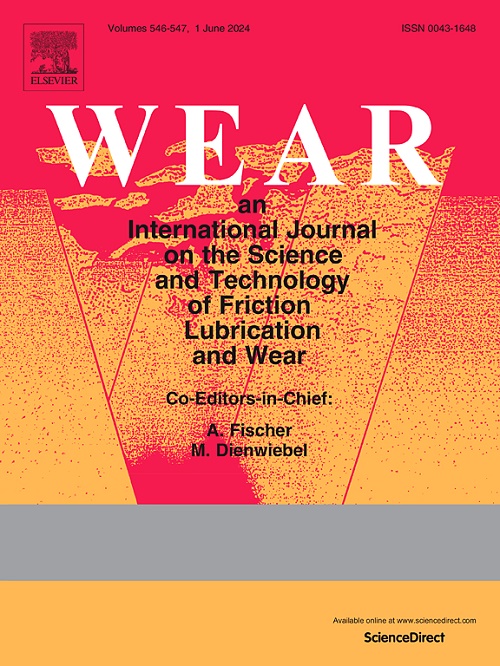Investigation of feed rate impact on microscale surface textures and turning performance of SiAlON ceramic cutting tools
IF 5.3
1区 工程技术
Q1 ENGINEERING, MECHANICAL
引用次数: 0
Abstract
Microscale textures inspired by nature were created on the rake face of SiAlON ceramic inserts using a femtosecond laser system. A detailed investigation was carried out to study the effect of laser parameters such as power, focal length, passing frequency, and media (air/water) on the inserts. The cutting performance of both the non-textured and textured SiAlON inserts was evaluated in terms of tool wear, chip-tool contact length, shear angle, and chip morphology during high-speed turning operations on INC-718. The optimization of laser parameters revealed that grooves were successfully formed in air, but water disrupted the laser focus, resulting in non-linear grooves. A detailed analysis of cutting insert wear patterns at different feed rates indicated the significant impact of texturing on the rake face. The application of surface texturing reduced crater wear, enhanced wear resistance, and minimized tool-chip contact, especially on the inserts with textured grooves located 100 μm from the cutting edge. Examination of chip-tool contact length and chip flow angles on textured and non-textured inserts showed that surface texturing reduced contact length and facilitated gradual chip curling, resulting in a decrease in chip flow angles. Surface texturing also reduced chip thickness, increased shear angle, decreased burr formation, and changed chip morphology during high-speed machining of Inconel 718.
研究进给速度对 SiAlON 陶瓷刀具微观表面纹理和车削性能的影响
利用飞秒激光系统在 SiAlON 陶瓷刀片的斜面上制作了受自然启发的微观纹理。详细调查研究了激光参数(如功率、焦距、通过频率和介质(空气/水))对刀片的影响。在对 INC-718 进行高速车削加工时,从刀具磨损、切屑与刀具接触长度、剪切角和切屑形态等方面评估了无纹理和有纹理 SiAlON 刀片的切削性能。对激光参数的优化结果表明,在空气中可以成功形成沟槽,但水会干扰激光聚焦,从而产生非线性沟槽。对不同进给速率下切削刀片磨损模式的详细分析表明,纹理加工对前角表面的影响很大。表面纹理的应用减少了凹坑磨损,提高了耐磨性,并最大限度地减少了刀具与切屑的接触,尤其是在距离切削刃 100 μm 处有纹理沟槽的刀片上。对有纹理和无纹理刀片上的切屑-刀具接触长度和切屑流动角的研究表明,表面纹理减少了接触长度,有利于切屑逐渐卷曲,从而导致切屑流动角减小。在高速加工 Inconel 718 时,表面纹理还能减少切屑厚度、增加剪切角、减少毛刺形成并改变切屑形态。
本文章由计算机程序翻译,如有差异,请以英文原文为准。
求助全文
约1分钟内获得全文
求助全文
来源期刊

Wear
工程技术-材料科学:综合
CiteScore
8.80
自引率
8.00%
发文量
280
审稿时长
47 days
期刊介绍:
Wear journal is dedicated to the advancement of basic and applied knowledge concerning the nature of wear of materials. Broadly, topics of interest range from development of fundamental understanding of the mechanisms of wear to innovative solutions to practical engineering problems. Authors of experimental studies are expected to comment on the repeatability of the data, and whenever possible, conduct multiple measurements under similar testing conditions. Further, Wear embraces the highest standards of professional ethics, and the detection of matching content, either in written or graphical form, from other publications by the current authors or by others, may result in rejection.
 求助内容:
求助内容: 应助结果提醒方式:
应助结果提醒方式:


